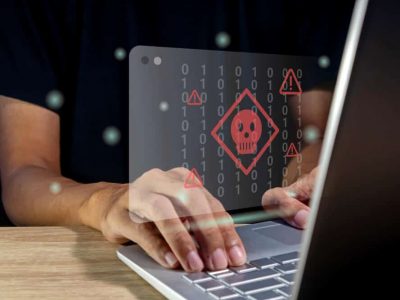In today’s cyber landscape, organizations face constant threats from increasingly sophisticated attacks. To mitigate these risks, businesses often rely on penetration testing to assess and strengthen their security posture. While automated penetration testing has emerged as a powerful tool for scanning and detecting vulnerabilities, it does not replace the in-depth, hands-on approach of traditional penetration testing. Instead, the integration of both methods offers the most comprehensive solution for ensuring robust information security.
This article explores the benefits of combining automated and manual penetration testing to maximize an organization’s defense against cyber threats.

The Role of Traditional Penetration Testing
Traditional penetration testing, also known as manual pen testing, involves ethical hackers who simulate real-world attacks to exploit vulnerabilities in a company’s network, systems, and applications. This method provides deep insights into how a system can be compromised by cybercriminals, allowing organizations to fix weaknesses before they can be exploited.
Manual testing excels in understanding complex environments, testing business logic vulnerabilities, and uncovering security issues that automated systems might overlook. However, it is time-consuming and can be expensive, especially for large-scale systems with intricate architectures. Additionally, traditional testing is typically a one-time process, leaving a window of risk until the next scheduled test.
The Power of Automated Penetration Testing
Automated penetration testing, on the other hand, uses advanced software tools and artificial intelligence to continuously scan for vulnerabilities across networks and applications. Automated systems offer speed, efficiency, and scalability, making them ideal for repetitive tasks and covering broad attack surfaces. They can run tests continuously, providing real-time updates as new vulnerabilities emerge.
While automated tools can quickly detect common vulnerabilities, they may struggle with complex, context-dependent security issues. Additionally, automated tests may generate false positives or miss nuanced flaws that manual testers can identify through creative exploration.
The Perfect Combination: Maximizing Security with a Hybrid Approach
Combining automated and manual penetration testing allows organizations to leverage the strengths of both methods and compensate for their respective limitations. Here’s how integrating the two can maximize security:
-
Comprehensive Coverage: Automated testing can rapidly scan wide attack surfaces, identifying common vulnerabilities across all devices, applications, and networks. Manual testers can then focus on the more complex vulnerabilities that require a deeper understanding of the system’s architecture, logic, and business processes.
-
Continuous Monitoring with Detailed Investigation: Automated systems offer real-time monitoring, alerting teams as new vulnerabilities are discovered. Meanwhile, manual testers can be deployed to investigate the most critical issues in detail, ensuring that the most dangerous vulnerabilities are thoroughly explored and resolved.
-
Efficiency and Cost-Effectiveness: By automating repetitive tasks like vulnerability scanning and reporting, businesses can reduce the workload on manual testers, making the overall testing process more efficient. This hybrid approach lowers costs while ensuring that the most complex security risks are still given the necessary human attention.
-
Minimizing False Positives: Automated tests are known for generating false positives—alerts for vulnerabilities that do not actually pose a risk. By integrating manual penetration testing, human experts can review and validate these alerts, ensuring that only legitimate vulnerabilities are addressed, saving time and resources.
-
Tailored Solutions: Manual testers can customize their approach based on specific business requirements, ensuring that the most critical systems receive targeted attention. Meanwhile, automated tools can provide a standardized, scalable solution for detecting vulnerabilities across the rest of the infrastructure.
The Role of AI in Automated Penetration Testing
Artificial intelligence and machine learning have begun to play a crucial role in automated penetration testing, further enhancing the integration between automated and manual approaches. AI-driven systems can analyze data from previous tests, learn from past vulnerabilities, and adapt to new threats. As AI continues to evolve, automated tools are becoming smarter, providing better detection and more accurate reporting.
However, the human element remains indispensable. While AI can identify patterns and flag potential vulnerabilities, the creativity and strategic thinking of ethical hackers are essential for recognizing context-dependent security risks that machines might not understand.
Why Integration Matters for Business Security
For organizations that prioritize security, integrating automated penetration testing with traditional testing methods is not just a best practice—it’s essential. By combining the speed and scalability of automated tools with the expertise and adaptability of human testers, businesses can achieve a more thorough and reliable security assessment.
The hybrid approach allows for continuous monitoring while ensuring that deep, complex vulnerabilities are not overlooked. This integration minimizes risks and maximizes the organization’s ability to stay ahead of evolving cyber threats.
Conclusion
In an era of increasingly sophisticated cyberattacks, relying solely on one form of penetration testing is not enough to ensure complete protection. The integration of automated penetration testing with traditional methods provides the best of both worlds, offering comprehensive coverage, efficiency, and detailed insight into security weaknesses. By combining these approaches, businesses can maximize their information security, ensuring their systems are protected against both common and advanced threats.




